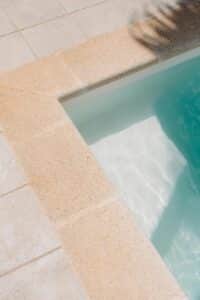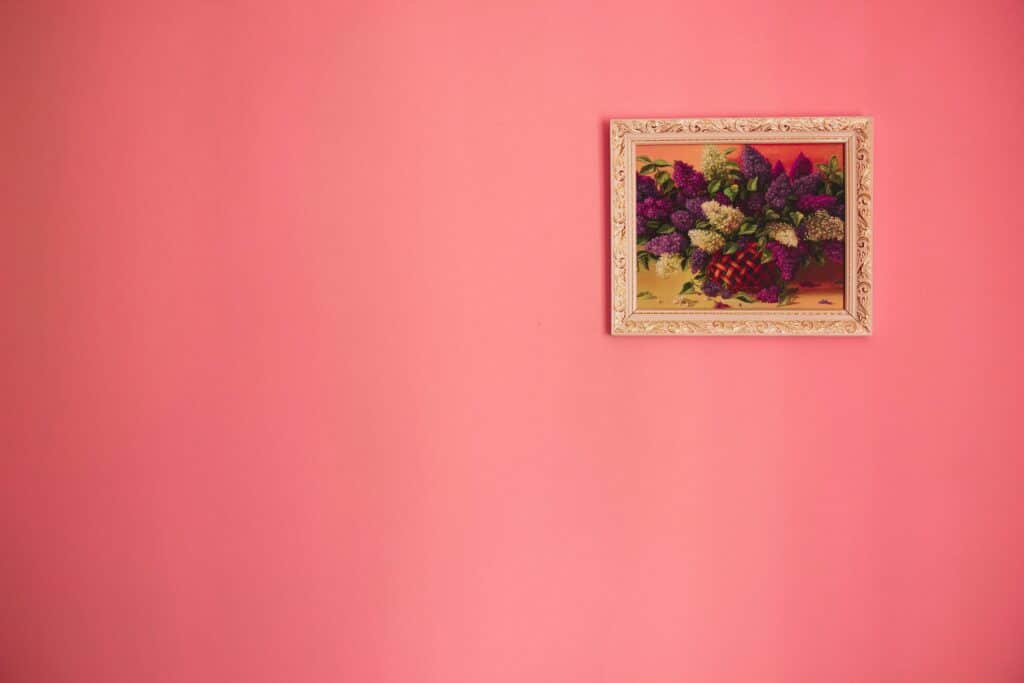Sandstone paving is a popular choice for outdoor spaces in Australia due to its natural beauty and durability. However, to maintain its elegance and longevity, it’s crucial to clean it properly. Pressure washing is a common method used for cleaning sandstone, but it must be done with care to avoid damaging the stone.
Understanding how to safely clean sandstone is essential for homeowners and maintenance professionals alike. Incorrect cleaning techniques can lead to damage, discolouration, or deterioration of the stone over time. Thus, it’s vital to approach the cleaning of natural stone like sandstone with the right techniques and equipment.
Key Takeaways
- Pressure washing can be an effective method for cleaning sandstone if done correctly.
- Australian sandstone requires special care to maintain its natural beauty.
- The frequency of cleaning sandstone depends on its exposure to dirt and grime.
- Using the right equipment and techniques is crucial to avoid damaging the sandstone.
- Regular maintenance, including proper cleaning, can extend the life of sandstone paving.
Understanding Australian Sandstone Properties
Understanding the properties of Australian sandstone is essential for preserving its durability and aesthetic appeal. Australian sandstone is a popular choice for construction and landscaping due to its natural beauty and durability. However, its unique characteristics require special care to maintain its appearance and longevity.
The Porous Nature of Sandstone
Sandstone is quite porous and easily absorbs not only, but also any staining substances the water may contain. This porosity makes it vulnerable to various forms of staining and discolouration The porous nature of sandstone means that it can absorb dirt and grime, which can lead to a deterioration in its appearance over time.
Common Issues with Australian Sandstone
Some common issues with Australian sandstone include staining, discolouration and erosion. These issues can be caused by exposure to weather elements, poor maintenance, or the use of inappropriate cleaning methods. Some of the most common problems faced by sandstone structures include:
- Moss and algae growth
- Rust and mineral deposits
- Oil and organic stains
How Weather Affects Sandstone in Australia
Australia’s diverse climate conditions can significantly impact the durability of sandstone. Weathering from rain, sun, and temperature fluctuations can cause sandstone to degrade over time. Understanding how weather affects sandstone is crucial for developing effective maintenance and cleaning strategies.
The effects of weather on sandstone can be mitigated by using appropriate cleaning methods and protective measures. Regular maintenance can help preserve the appearance and durability of sandstone structures.
Pressure Washing Sandstone: The Right Approach
Pressure washing sandstone requires a careful approach to maintain its integrity. When using a pressure washer, it’s crucial to start with the lowest setting to avoid damaging your beautiful paving.
The effectiveness of pressure washing depends on several factors, including the type of sandstone and its condition. Understanding these factors is essential to determine the best cleaning approach.
Appropriate Pressure Levels for Different Sandstone Types
Different types of sandstone have varying levels of hardness and porosity, which affect the appropriate pressure level for cleaning. For instance:
- Soft sandstone requires lower pressure (around 1000-1500 PSI) to prevent damage.
- Hard sandstone can withstand higher pressure (up to 2500 PSI), but caution is still necessary.
Equipment Selection for Effective Cleaning
Choosing the right equipment is vital for effective sandstone cleaning. Consider the following:
- Select a pressure washer with adjustable pressure settings.
- Use a wide fan tip to distribute the pressure evenly.
- Opt for a cleaner that is specifically designed for natural stone.
Testing Techniques Before Full Application
Before applying the pressure washing technique to the entire surface, it’s essential to test it on a small, inconspicuous area. This step helps to:
- Determine the appropriate pressure level.
- Check for any adverse reactions to the cleaning solution.
- Ensure the technique won’t damage the sandstone.
By following these guidelines and taking the necessary precautions, you can effectively clean your sandstone surfaces without causing damage.
 Step-by-Step Guide to Safely Clean Sandstone
Step-by-Step Guide to Safely Clean Sandstone
To maintain the integrity of your sandstone surfaces, a careful cleaning approach is necessary. Cleaning sandstone is not just about removing dirt; it’s about preserving the stone’s natural beauty and longevity.
Preparation and Surface Assessment
Before you start cleaning, gently brush the sandstone surface with a soft-bristled brush to remove any loose dirt and debris. This initial step prevents scratching the surface during the cleaning process.
Assess the sandstone surface for any stubborn stains or areas of deterioration that may require special attention.
Selecting and Applying Appropriate Cleaning Solutions
The choice of cleaning solution depends on the type of dirt or stain and the condition of the sandstone. For general cleaning, a mild detergent mixed with water is often sufficient.
However, for more stubborn stains, you may need to use a specialized cleaning product designed for natural stone. Always test a small, inconspicuous area first to ensure the solution doesn’t damage the sandstone.
Proper Technique and Distance Control
When using a pressure washer, maintain a safe distance from the surface to avoid damaging the sandstone. The nozzle should be at least 300mm away, and you should use a wide fan tip to distribute the pressure evenly.
Keep the nozzle moving to prevent concentrating the pressure on a single spot.
Rinsing and Drying Procedures
After cleaning, thoroughly rinse the sandstone surface with clean water to remove any soap or cleaning solution residue.
Use a clean, soft cloth or a squeegee to remove excess water, and then allow the surface-to-air dry. Avoid using high-pressure jets of water for rinsing, as this can damage the stone or dislodge sandstone particles.
By following these steps, you can safely clean your sandstone surfaces, maintaining their appearance and extending their lifespan.
Common Sandstone Stains and Their Removal
Sandstone surfaces in Australia often fall victim to various stains that detract from their natural beauty. These stains not only affect the aesthetic appeal but can also compromise the integrity of the sandstone if left untreated. Understanding the types of stains and how to remove them is crucial for maintaining the longevity and appearance of sandstone surfaces.
Tackling Moss, Algae and Mould in Humid Australian Regions
Moss, algae, and mould are common issues in Australia’s humid climate. To remove these, a solution of water and a mild detergent can be effective. For more severe cases, a mixture of water and bleach can be used, but with caution to avoid damaging the sandstone.
Removing Rust and Mineral Deposits
Rust and mineral deposits can be challenging to remove. Using a poultice made from a commercial rust remover or a homemade mixture of baking soda and water can be effective. Apply the poultice to the stain, cover with plastic wrap, and let it sit for 24 hours before rinsing.
Dealing with Oil and Organic Stains
For oil and organic stains, a gentle cleaning solution is recommended. A mixture of warm water and a mild dish soap can help lift the stain without damaging the sandstone.
Natural Cleaning Solutions for Stubborn Stains
For stubborn stains, natural cleaning solutions can be very effective. Applying a baking soda paste to the stain, covering it with plastic wrap, and letting it sit for 24 hours is a recommended method. This approach helps in lifting the stain without using harsh chemicals.
Some common stains and their removal methods include:
- Moss and Algae: Mild detergent solution
- Rust Stains: Baking soda poultice
- Oil Stains: Mild dish soap solution
By understanding the cause of the stain and applying the appropriate removal technique, you can restore the beauty of your sandstone surfaces.
Sealing and Protecting Your Sandstone After Cleaning
Once you’ve cleaned your sandstone, applying a sealant is vital to preserve its natural beauty and extend its lifespan. Sealing sandstone is a crucial step that protects it from future damage, reduces maintenance, and enhances its appearance.
Benefits of Sealing Australian Sandstone
Sealing Australian sandstone offers several benefits, including protection against weathering, reduced absorption of water, and prevention of stains. By sealing your sandstone, you also limit the growth of algae and moss, which thrive in moist environments. This is particularly important in humid Australian regions, where sandstone is more susceptible to such growth.
Some key benefits of sealing include:
- Enhanced durability and resistance to weathering
- Reduced water absorption, minimizing the risk of damage from freezing and algae growth
- Protection against stains from oil and other substances
Types of Sealants for Different Applications
There are various types of sealants available, each suited to different applications and desired outcomes. The choice of sealant depends on the specific needs of your sandstone, such as the level of protection required and the desired finish.
Common types of sealants include:
- Water-based sealants, ideal for most sandstone applications due to their ease of use and environmental friendliness
- Solvent-based sealants, offering strong protection but requiring more caution during application
- Penetrating sealants, which soak into the sandstone to provide protection from within
Professional vs DIY Sealing Considerations
When it comes to sealing your sandstone, you have the option of doing it yourself or hiring a professional. While DIY sealing can be cost-effective, professional sealing ensures a high-quality finish and optimal protection.
Maintenance Schedule for Different Australian Climates
The frequency of resealing your sandstone depends on the local climate. In harsher Australian climates, such as the dry conditions of the Outback or the humid tropical north, sandstone may need to be resealed more frequently.
A general maintenance schedule includes:
- Annual inspections to check the condition of the sealant
- Resealing every 2–5 years, depending on exposure to weather and traffic
Conclusion
Properly maintaining your sandstone paving is crucial to preserving its beauty and durability. By following the steps outlined in this article, you can keep your sandstone in excellent condition, ensuring it remains a stunning feature of your outdoor space for years to come.
Regular maintenance is key to protecting your sandstone investment. This includes regular cleaning, sealing, and inspecting the stone for any signs of damage or wear. By doing so, you can prevent common issues such as moss, algae, and mould growth, and ensure the longevity of your sandstone.
Preserving the beauty of sandstone requires a combination of proper cleaning techniques, regular maintenance, and effective sealing. By adopting these practices, you can enjoy the durability and aesthetic appeal of your sandstone paving, while also protecting your investment.
Get your free quote and keep your stone clean!
FAQ
What is the ideal pressure for pressure washing sandstone?
The ideal pressure for pressure washing sandstone depends on the type of sandstone. For most Australian sandstone, a pressure washer with a psi rating between 1500 and 2500 is recommended. However, it’s crucial to test a small, inconspicuous area first to avoid damaging the stone.
Can I use a regular detergent to clean my sandstone?
No, it’s not recommended to use regular detergent to clean sandstone. Harsh chemicals can erode the stone and cause damage. Instead, use a mild, pH-neutral cleaner specifically designed for natural stone.
How often should I seal my sandstone surfaces?
The frequency of sealing sandstone depends on the climate and the amount of foot traffic it receives. In harsh Australian climates, it’s recommended to seal sandstone every 2–5 years. However, it’s best to consult with a professional to determine the best maintenance schedule for your specific sandstone.
Can I use a pressure washer to clean sandstone with moss and algae?
Yes, a pressure washer can be used to clean sandstone with moss and algae, but it’s essential to use the right technique and cleaning solution. A soft pressure washer with a wide fan tip and a mild cleaner can effectively remove moss and algae without damaging the stone.
Is it necessary to dry sandstone completely after cleaning?
Yes, it’s crucial to dry sandstone completely after cleaning to prevent water spots and damage. Use a clean towel or let it air dry, ensuring the surface is completely dry before applying a sealant.
Can I use baking soda to remove stains from sandstone?
Yes, baking soda can be used to remove certain stains from sandstone. Make a paste with baking soda and water, apply it to the stain, and let it sit before rinsing. However, it’s essential to test a small area first to ensure the baking soda doesn’t damage the stone.
What are the benefits of sealing sandstone?
Sealing sandstone provides several benefits, including protection from stains, water damage, and harsh weather conditions. It also helps maintain the stone’s natural beauty and can reduce maintenance costs in the long run.





